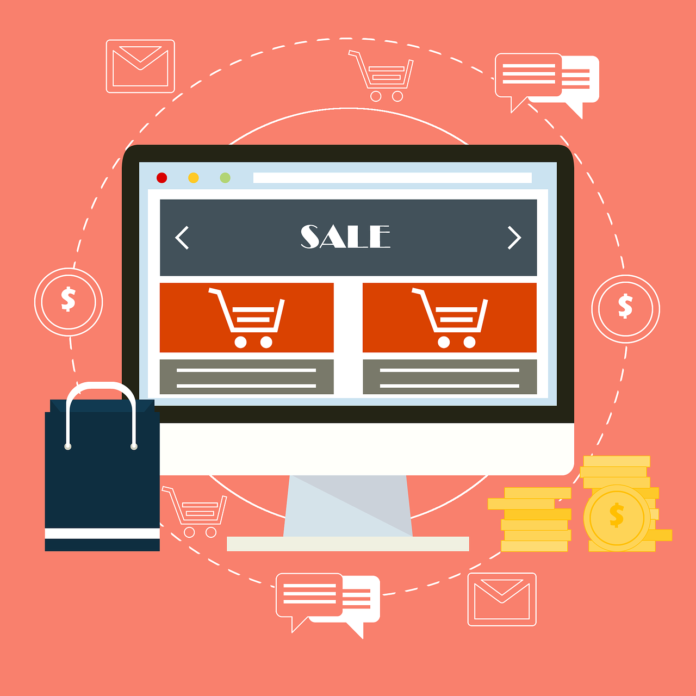E-commerce is a rapidly growing industry that provides businesses with the opportunity to reach customers and make sales more efficiently than ever before. By understanding what e-commerce is and why it’s so important, you can gain a huge advantage when it comes to setting up shop online. In this blog post, we’ll explain exactly what e-commerce entails and why it’s of such great importance for entrepreneurs.
What Is E-Commerce
E-commerce, short for electronic commerce, is the buying and selling of goods and services over the Internet. It has revolutionized the way businesses interact with customers and has become an essential part of the modern economy.
From small businesses to multinational corporations, e-commerce has given companies the opportunity to reach a wide variety of customers across the globe. By utilizing e-commerce platforms, businesses can create an online store to showcase their products and services to potential customers. Customers can then easily browse these stores and purchase items with ease, allowing businesses to make sales without the need for physical stores.
The convenience provided by e-commerce has been a major factor in its success. Customers can shop from the comfort of their own homes with ease, while businesses can streamline their operations by automating certain processes such as inventory management, fulfillment, and customer service. This helps businesses save time and money, allowing them to focus on other aspects of their operations.
E-commerce also provides businesses with valuable data that can be used to improve their operations. Companies can utilize analytics tools to track customer behavior, identify trends, and be used to tailor marketing campaigns, helping businesses to reach more customers and increase their sales.
Different Types of E-Commerce Models
The two main types of e-commerce models are business-to-consumer (B2C) and business-to-business (B2B). B2C models involve selling products or services directly to individual consumers, while B2B models involve selling products or services to other businesses.
B2C models are the most common type of e-commerce. This model involves an online store where customers can purchase goods or services from a business. The customer service team will typically provide support to customers and take care of the order fulfillment process, such as shipping and returns.
B2B models involve businesses selling products or services to other businesses. This type of e-commerce is often used by companies that need to purchase large quantities of goods or services in order to run their own businesses. The customer service team in a B2B model is typically focused on providing solutions to the business customers, rather than individuals.
In addition to these two main types of e-commerce models, there are also other models that are gaining popularity, including peer-to-peer (P2P) and subscription-based models. P2P models involve individuals selling goods or services directly to other individuals, while subscription-based models involve customers paying a recurring fee in exchange for access to a product or service.
The Benefits of Having an Online Store
An online store eliminates the need for a physical location. This means lower overhead costs as there is no rent or additional staffing required. An online store also provides the opportunity to reach a much broader audience. By leveraging digital marketing, businesses can target potential customers all over the world, allowing them to access customers and markets that would otherwise be impossible to access.
An online store is also more flexible than a physical store. Businesses can make changes to their products quickly and easily, without having to worry about the logistics of physically restocking a store. Additionally, online stores can be open 24/7, which allows for more convenient shopping for customers.
Finally, an online store is more cost-effective than a physical store in many ways. Since there is no need for physical space or staff, businesses can save money on overhead costs. Additionally, businesses can save money on shipping costs as they can use services like drop-shipping to directly ship products to customers.
Some Steps for Setting Up an E-Commerce Website
Creating an e-commerce website is a great way to open up your business to a wider audience and start selling your products and services online.
First, you will need to register a domain name that accurately represents your business and products. This is the website address that will be used to direct customers to your online store. Once you have chosen a domain name, you will need to find a web hosting service. This is the platform that will store your website’s content and allow it to be accessed on the internet.
Next, you will need to determine which e-commerce platform is best for your business. There are a number of popular e-commerce platforms available, so it is important to compare features and determine which one will meet all of your needs. After your platform is set up, you will need to customize the look and feel of your website by adding images, logos, and other design elements.
Once your website is looking the way you want it, you will need to set up payment methods so customers can purchase your products. Popular payment gateways like PayPal or Stripe are secure and widely accepted, so these are usually the best options. You may also want to consider adding additional shipping options or offering discounts in order to increase sales.
Finally, it is essential to test your website and ensure that all of the functionality is working properly. This includes making sure that customers can checkout without any issues, as well as ensuring that your website is secure and protected from malicious attacks. Once you have done all of these steps, you can launch your e-commerce website and start selling your products and services online.
Market and Drive Traffic to Your Online Store
An effective online store strategy requires a well-thought-out marketing plan to help drive customers to your store and convince them to purchase. Here are some tips to help you successfully market your online store and drive traffic to it.
The first step in any successful marketing strategy is to create an audience profile. Take the time to research and understand who your target customer is and what they value. This will help you refine your message and tailor your marketing campaigns to reach the right people.
Once you have a clear understanding of your desired audience, it’s time to start building your online presence. Utilize social media, email, and other digital marketing channels to reach your potential customers. Regularly post content that is engaging and relevant to your audience, and don’t forget to include a link to your store!
In addition to digital marketing channels, you should also take advantage of traditional marketing strategies such as print ads, radio spots, and television commercials. Utilize these avenues to build your brand and get your store’s name out there.
Finally, make sure you are taking full advantage of SEO optimization. SEO is essential for any online business, as it helps improve your visibility in search engine results. Make sure your store’s content is optimized for search engines and focus on creating high-quality content that is keyword-rich. IF SEO is intimidating or you’d rather just focus on your store content, consider working with SEO specialists to help you get your site out there. Professionals like Zoek can help with marketing and SEO for your site.
In conclusion, e-commerce allows businesses to reach customers around the world, save money on overhead costs, and take advantage of marketing strategies that can help them increase their sales. By understanding the different types of e-commerce models, the benefits of having an online store, and the essential steps for setting up an e-commerce website, businesses can ensure that they are taking full advantage of this powerful tool. With the right marketing strategies, businesses can drive traffic to their online store and increase their sales. E-commerce is an invaluable tool for any business that wants to stay competitive in today’s digital world.















